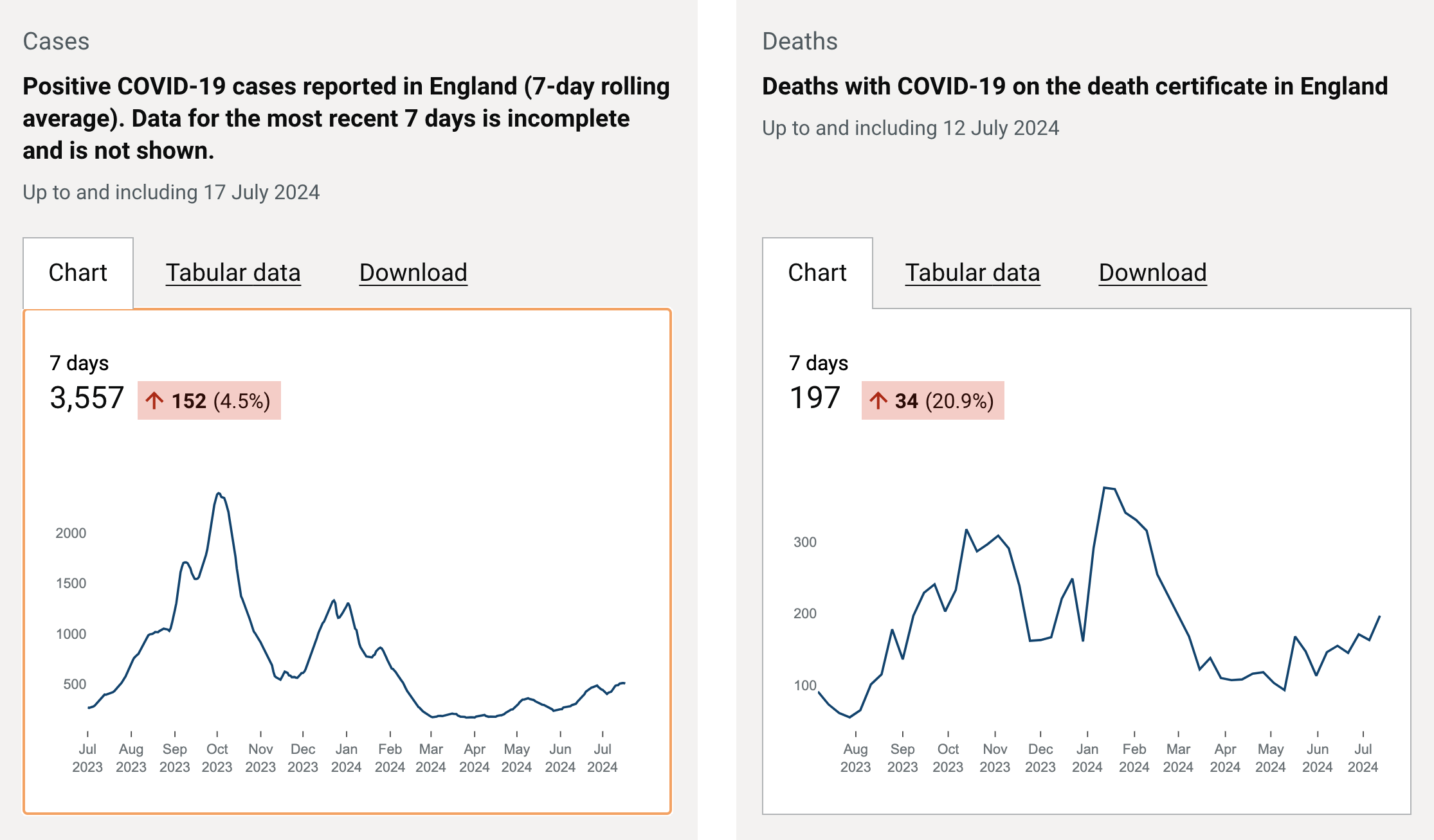Should we be taking precautions against the FLiRT Covid-19 variant?
Infections have risen this summer in the UK, according to health officials

As Brits lap up the summer sun, many of us will be going to summer gatherings, socialising more, and going on holiday.
But this summer, it’s likely you or someone you know has suffered from an unseasonable cold. It is quite possible this was in fact a bout of Covid-19.
New data from the UK Health Security Agency (UKHSA) has revealed that Covid cases are on the rise.
Up to mid-July, 3,557 infections and 192 deaths were recorded. Since then, infections have been fluctuating under 500 cases per week.
The majority of these recorded infections are from hospitals and primary care settings, meaning the number of infections across the country is likely to be much higher.
What is ‘FliRT’ and is it still at large?
‘FliRT’ is a variant that descended from the dominant JN.1 variant – a sub-variant of the Omicron Covid strain.
The substrain does not have a unique symptom profile, nor is there evidence to show an increase in severity, but there is still a growth advantage because it encompasses a group of variants.
A spokesperson from UKHSA advised that it was no longer helpful to think about Covid as ‘new variants’ because the genomic picture was much bigger.
Instead, we have to accept that there are multiple variants in operation in society.
The difference right now is that cases are rising slowly and from a small base, unlike previous spikes, where rapid increases in cases were prevalent.
According to a July UKHSA report, the weekly hospital admission rate had increased by 4.35 per 100,000 in the week of 8 July compared with 3.72 per 100,000 in the previous week.

The body observed that the North East had the highest hospital admission rate and the age group most affected were those aged over 85.
General Practitioner Steve Taylor said: “There has been a big spike in Covid cases and respiratory tract infections that might be Covid but no one tests at home anymore.
“Last week 15-20 per cent of the consultations I was doing were for respiratory illnesses which pre-Covid would have been highly unusual for this time of year.
“It is certainly having an impact and most of these consultations were with adults with symptoms lasting for more than seven days.”
What are the symptoms?
While the symptoms haven’t changed, NHS England say people could be at risk if they experience:
- A high temperature or shivering (chills) – a high temperature means you feel hot to touch on your chest or back (you do not need to measure your temperature)
- A new, continuous cough – this means coughing a lot for more than an hour, or 3 or more coughing episodes in 24 hours
- A loss or change to your sense of smell or taste
- Shortness of breath
- Feeling tired or exhausted
- An aching body
- A headache
- A sore throat
- A blocked or runny nose
- Loss of appetite
- Diarrhoea
- Feeling sick or being sick
Should we be testing?
Experts say testing is unlikely to make much difference in the scope of things and people should follow the general advice of a home recovery when suffering from respiratory illness.
This means staying at home until recovery and people should consider wearing a mask if travelling in confined public spaces.
Regular hand-washing should be a given.
What precautions should people take?
Ultimately, the advice remains the same, stay at home if you have any symptoms of a respiratory illness – whether you’re aware it’s Covid or not.
If you have to leave the house, be particularly cautious around vulnerable groups such as the very young, very elderly, and those who are immunosuppressed.
Dr Mary Ramsay director of Public Health Programmes at UKHSA said: “While COVID-19 cases have been rising in recent weeks, lately we have seen this activity begin to stabilise across multiple indicators. We will continue to monitor rates closely.
“We know socialising is part of the fun of summer but taking some time out to recover when you’re unwell also stops the spread of these viruses. This helps to protect others, especially those who are more vulnerable.
“If you have symptoms of a respiratory virus, we continue to ask people to avoid contact with others but if you do need to leave home, consider wearing a mask in crowded places. Simple measures like catching coughs and sneezes in a tissue, and regular handwashing help to reduce the spread of viruses, as does opening windows when meeting others indoors to improve ventilation.”
Ultimately, the advice remains the same, stay at home if you have any symptoms of a respiratory illness – whether you’re aware it’s Covid or not.
If you have to leave the house, be particularly cautious around vulnerable groups such as the very young, very elderly, and those who are immunosuppressed.
Subscribe to Independent Premium to bookmark this article
Want to bookmark your favourite articles and stories to read or reference later? Start your Independent Premium subscription today.

Join our commenting forum
Join thought-provoking conversations, follow other Independent readers and see their replies
Comments